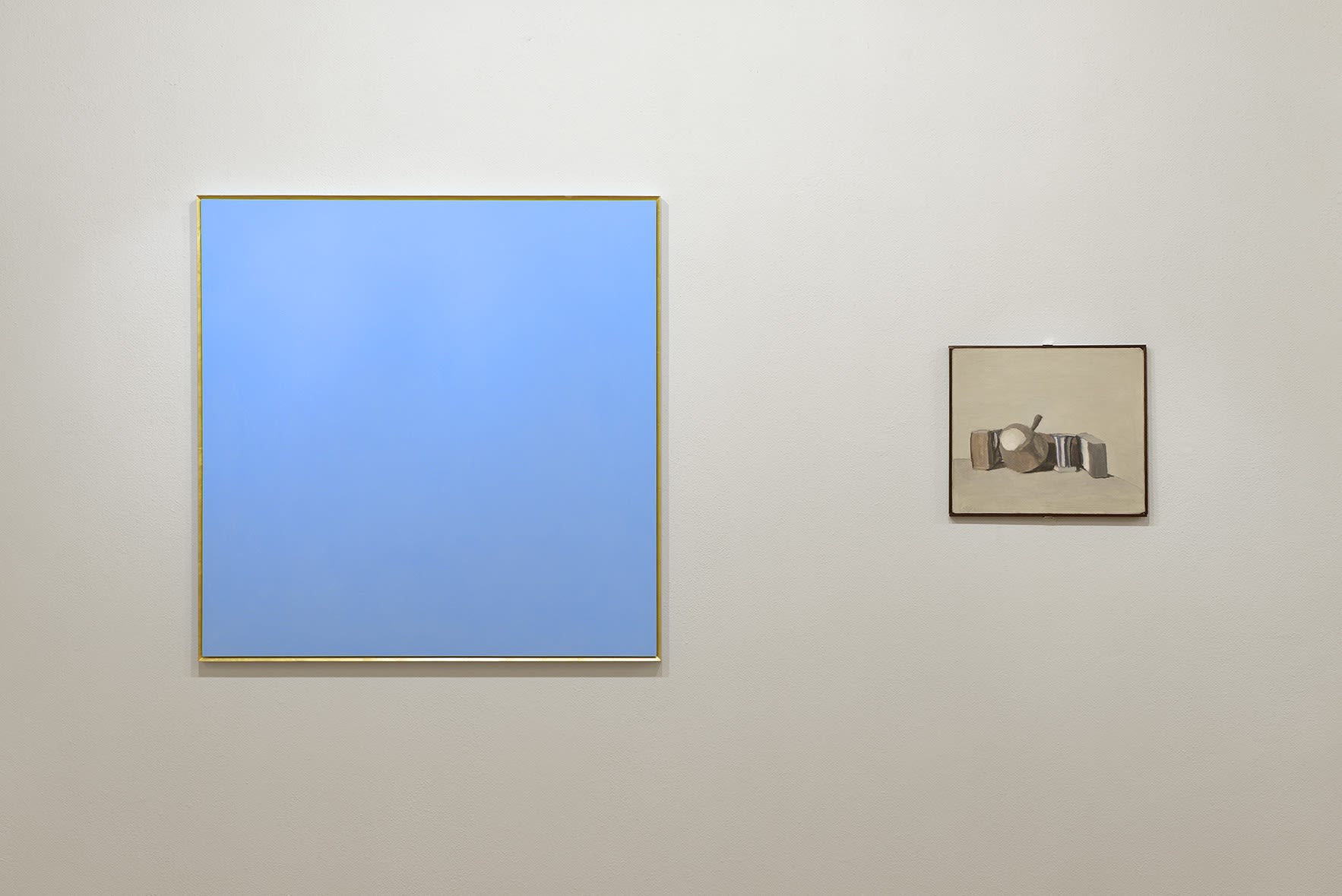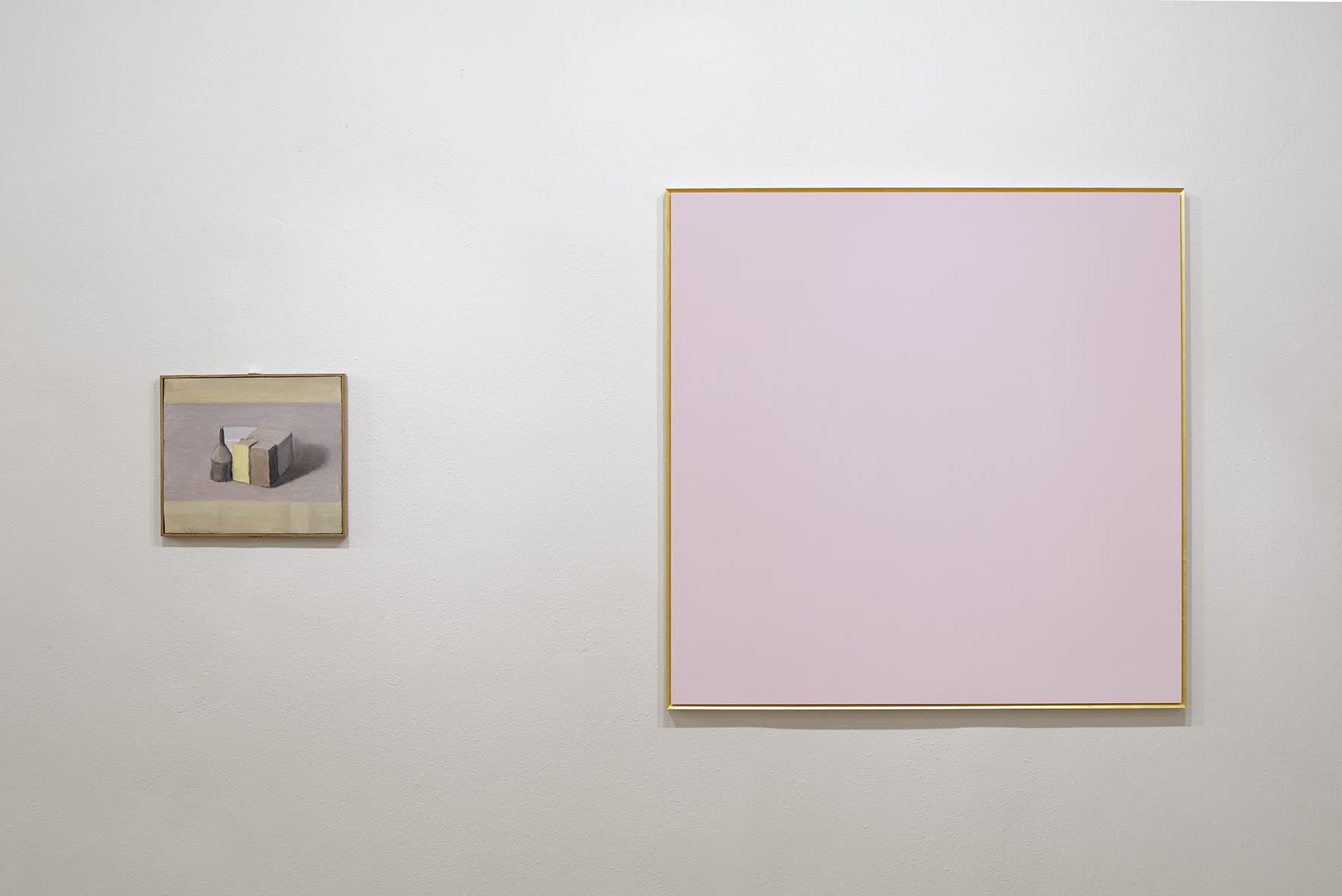Ettore Spalletti/ Giorgio Morandi
Galleria d'Arte Maggiore, Bologna
After the stop at the recent The Armony Show in New York, the Galleria d'Arte Maggiore brings the exhibition "Ettore Spalletti Giorgio Morandi. A dialogue of light". A "classic" exhibition due to the presence of two great authors of the history of Italian art, but also unusual because the combination of the two is initially curious and then, being literally invaded by the pictorial spaces of the two authors, everything seems as if it had to be so for a long time. The temporal, physical and spatial suspension of Giorgio Morandi "naturally" meets color, light and form of both the host place and Spalletti's interpretation. That abstraction that transcends the object transfigured on the canvas, balancing the space inside and outside the painting, is found in Ettore Spalletti's monochromes, now free from the same frames, suggesting atmospheres literally outside a predefined time and space.

And so it happens that, as the author himself affirms, "one enters a room noticing that that place loses the reality of its color to acquire the chromatic value of its interior". Just the atmosphere inside and outside the works of both authors assumes the value of witness and receptor of colors, spaces and times in which the spectator finds himself in spite of himself. Spalletti's works almost seem to be a sort of natural continuation not so much of Morandi (who, however, never seems to be one of his masters as on this occasion) as of the attempt of early twentieth-century art to free itself from the boundaries and limits of painting and its representation.

The frame that "squares" and "frames" the painting is therefore lacking, or rather, in the case of Ettore Spalletti's works, it vanishes in a sort of natural continuation between the canvas and the space that contains it. This, as also for Morandi's still lifes, becomes a unicum in which to open the work in the mental place of the painting and in the real one in which it is inserted.
FABIOLA NALDI


